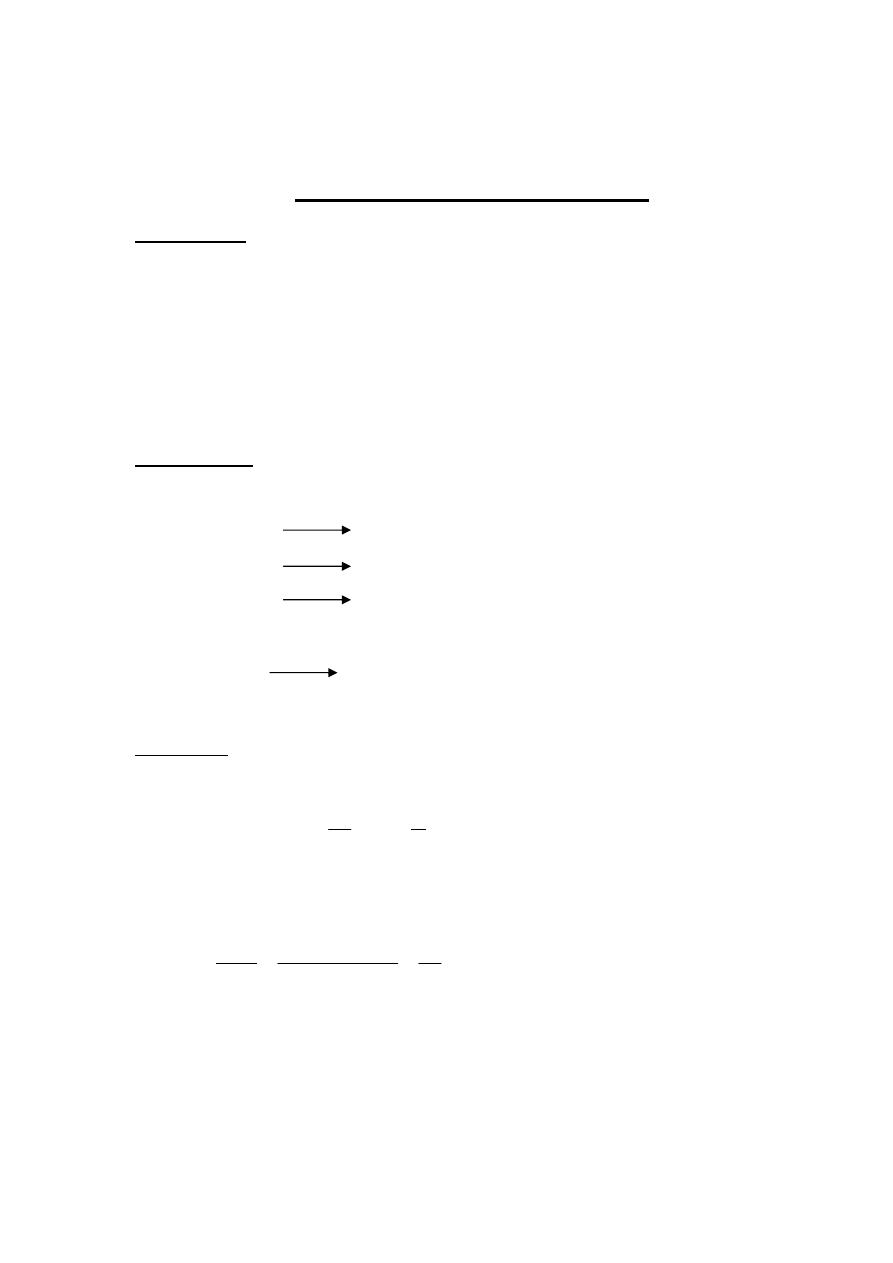
Dr. Sameir Abd Alkhalik Aziez
University of Technology (Lecture (1))
-
١
-
Basics of Electrical Circuits
Resources :-
Introductory circuit Analysis; by Robert L. Boylestad .
Basic Electrical Engineering science; by Mckenzie smith and K.T. Hosie
Electrical Technology.
ﺗﺮﺟﻤﺔ د، ﺔﯿﺋﺎﺑﺮﮭﻜﻟا ﺔﺳﺪﻨﮭﻟا ﻢﻠﻋ
.
ﻣﺤﻤﺪ زﻛﻲ
&
د
.
ﻣﻈﻔﺮ أﻧﻮر
Definitions :-
Electric charge : Fundamental property of sub-atomic particles .
Positive charge proton
negative charge electron
no charge
neutron
Like charges repel & opposite charges attract.
Unit of charge
coulomb
Current :-
We have a current when there is a few of charges
S
C
A
t
q
I
The direction of motion of positive charges is opposite to direction of motion of
negative charges.
Amper
I
t
q
t
Sec
Coul
6
19
10
10
6
.
1
.
.
q = Charge that flows through section in time
t.
Uniform flow of charges
direct current ( dc )
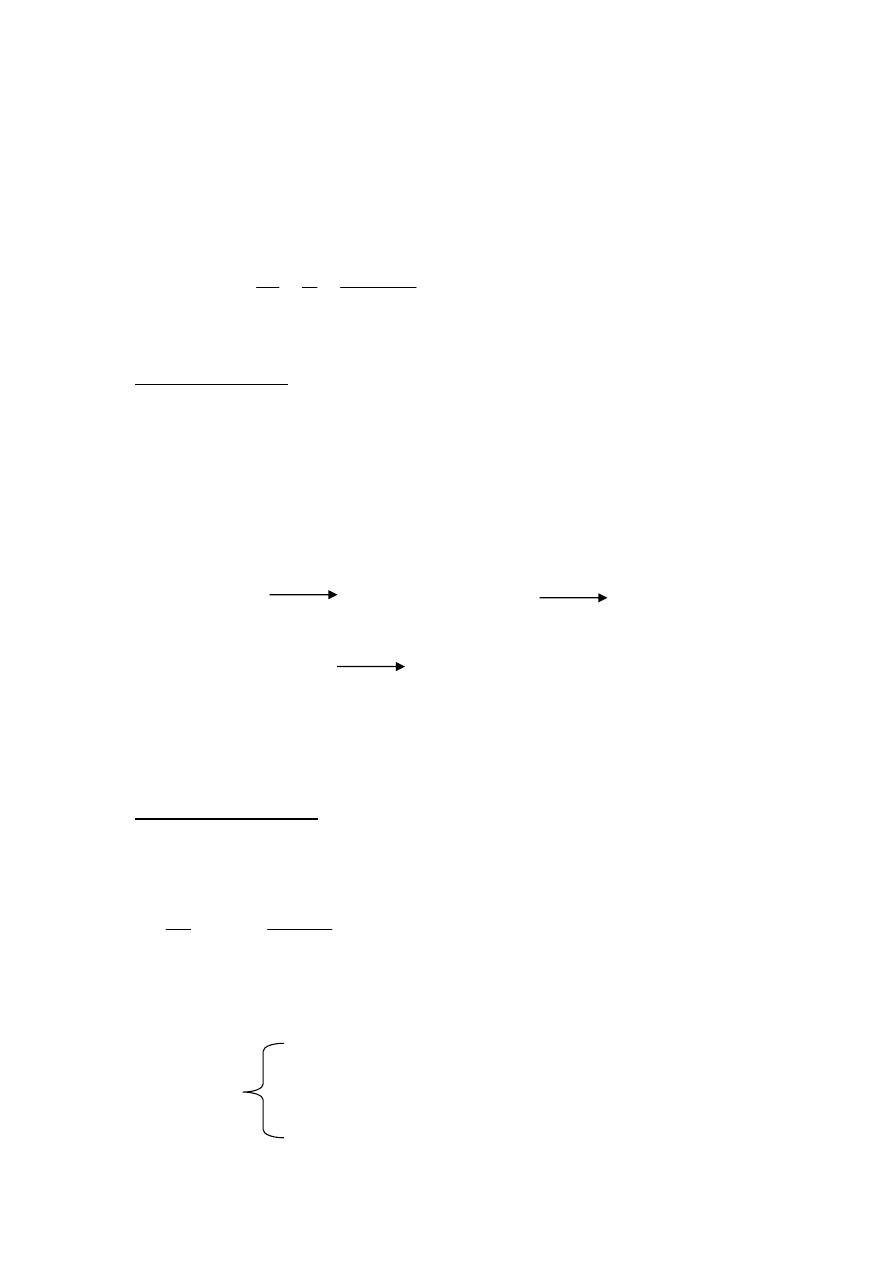
Dr. Sameir Abd Alkhalik Aziez
University of Technology (Lecture (1))
-
٢
-
Example: In a copper wire a flow of charge is 0.12 C in a time of 58 ms . Find
the current in this wire ?
Solution:
A
t
Q
t
q
I
06
.
2
10
58
12
.
0
3
Work & Energy:
d
F
w
.
Where:
w
: Is the work done by a force ( F ) acting over a displacement (
d
).
As charges move, subject to various forces they may gain or lose energy.
w
= work done = charge in energy
External force
work done on charges
charges gain energy.
( Like Sources )
Work done by charges
charges lose energy
(Like loads )
w
= Joules = N.m
Potential difference:
Potential difference between two points is the energy gained or lost by a unit
charge as it moves from on point to the other.
coulomb
Joule
volt
q
w
v
w
= work done for transporting a total charge
q
.
Potential difference
Voltage
Potential

Dr. Sameir Abd Alkhalik Aziez
University of Technology (Lecture (1))
-
٣
-
Power :- Time rate for doing work .
I
V
t
q
q
w
q
q
t
w
P
t
w
P
.
Watt (w) =
s
J
= V.A
Systems of unit ( S.I. ) :-
Quantity
Unit
Symbol
1) Charge (q)
Coulombs
C
2) Current (I)
Amper
S
C
A
3) Force (F)
Newton
N
4) Work , energy (w)
Joule
J=N.m
5) Voltage (V)
Volt
c
J
V
6) Power (P)
watt
A
V
s
J
w
.
7) Length (
)
meter
m
8) Temperature (T)
Kelvien
K
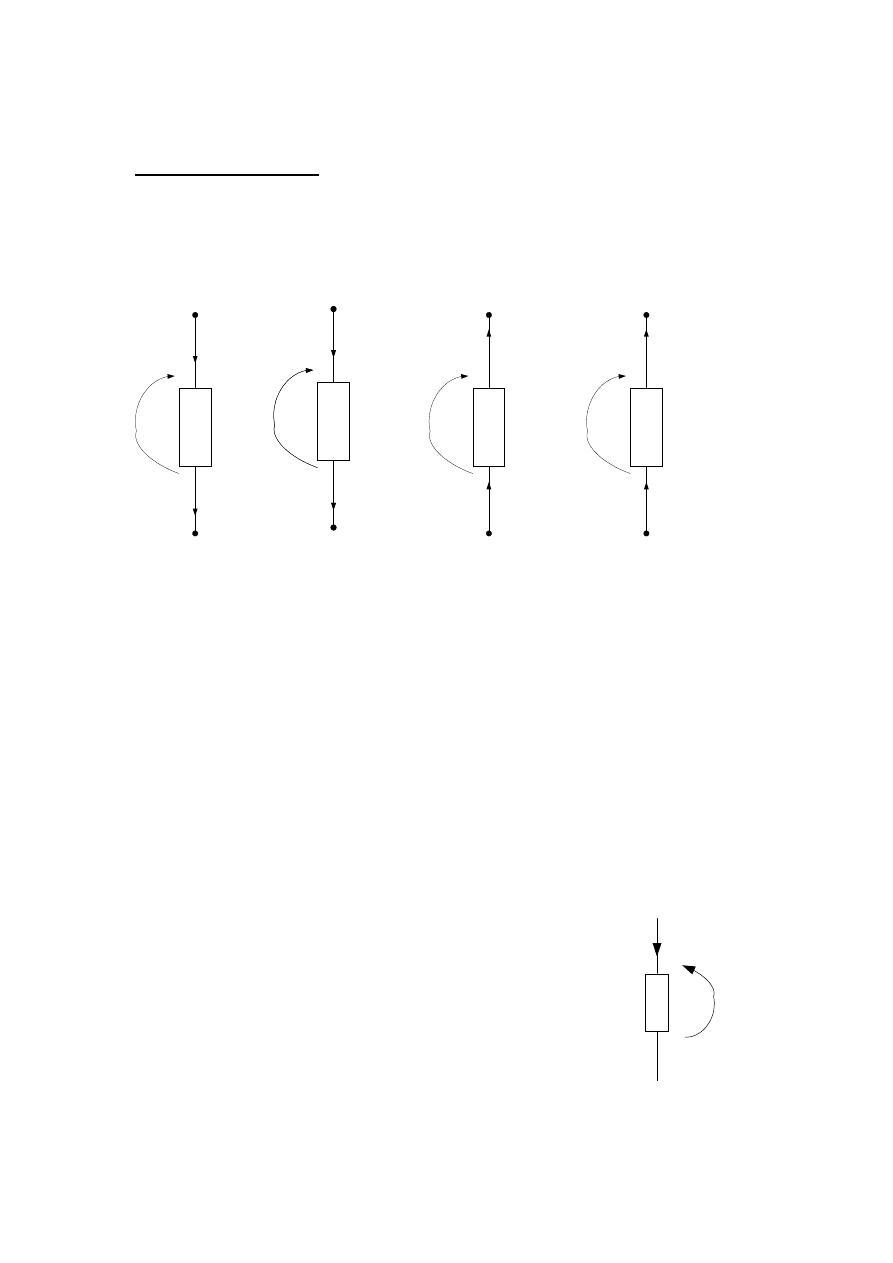
Dr. Sameir Abd Alkhalik Aziez
University of Technology (Lecture (1))
-
٤
-
Electrical Circuits :-
Circuit element :- is a two
– terminal electrical component .
Electrical circuit :- Interconnected group of elements .
Source = current and voltage in the same direction.
load = current and voltage in the opposite direction .
Resistive element, is always load and always dissipates power
+
VA
I
V
-
VB
I
+
VA
I
V
-
VB
I
+
VA
I
V
-
VB
I
+
VA
I
V
-
VB
I
-
VA
I
V
+
VB
I
(1)
Load
(dissipates power)
P = V.I
(2)
Source
(supplies power)
(3)
Source
(supplies power ,
charging)
(4)
Load
(dissipates power)
-
+
I
V
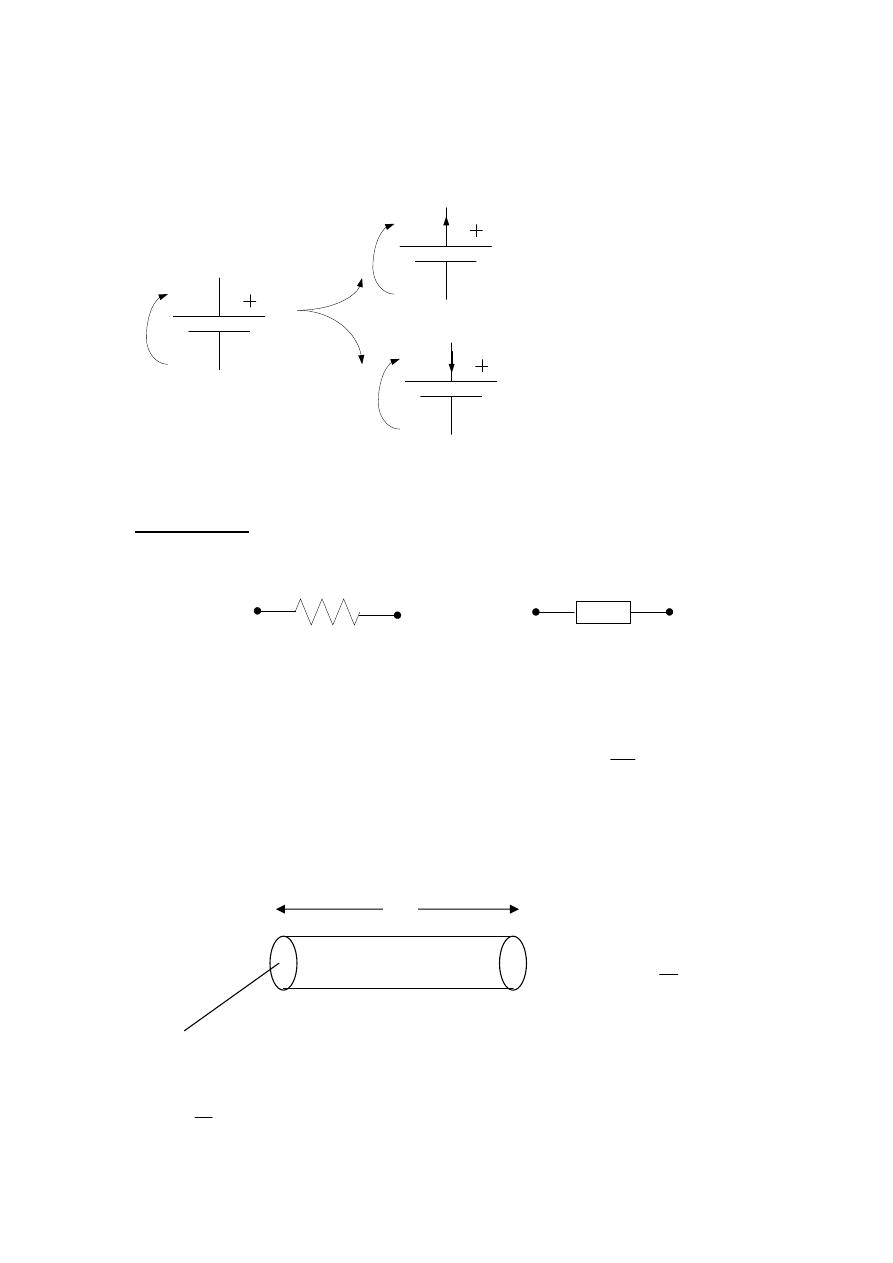
Dr. Sameir Abd Alkhalik Aziez
University of Technology (Lecture (1))
-
٥
-
Source of emf ( electro motive force )
s
Source ( supplies power )
Load ( consumes power )
Ex. Charging of batteries.
Resistance :-
The unit of resistance ( R ) is ohm ( Ω )
The resistance of any material is depends on four factors:
1. The length of conductor (
)
R
2. Cross
– section area of conductor ( A )
A
R
1
3. The nature of material conductor.
4. The temperature of conductor.
A
R
A
R
-
-
V
I
-
I
A
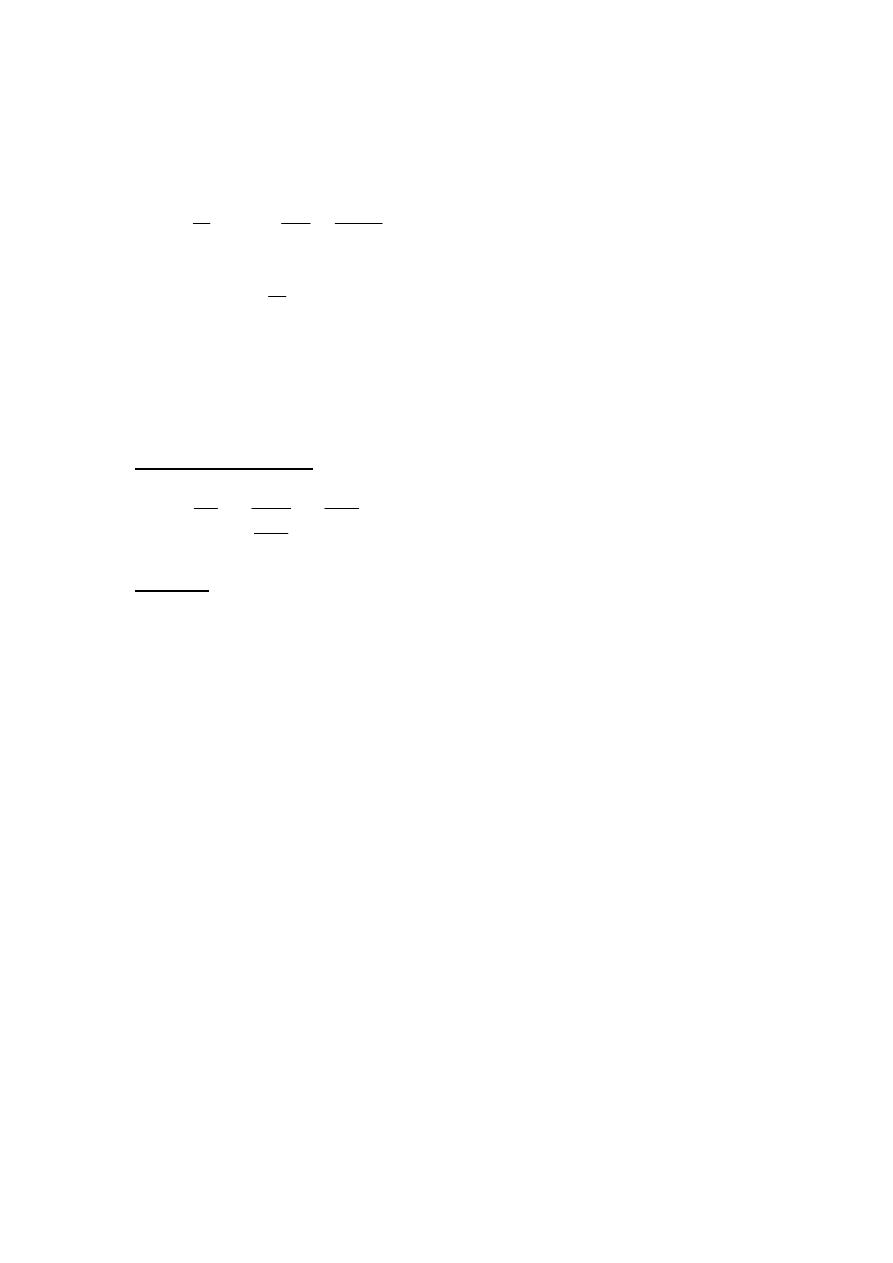
Dr. Sameir Abd Alkhalik Aziez
University of Technology (Lecture (1))
-
٦
-
= constant is called resistivity or specific resistance unit of resistivity.
m
m
m
RA
A
R
.
.
2
or
cm
.
2
2
2
d
r
A
r = radians of section.
d = diameter of section.
Conductance ( G ):-
A
A
R
G
1
1
(Siemens (S))
Prefix :-
pico
10
-12
P
nano
10
-9
n
micro
10
-6
μ
milli
10
-3
m
centi
10
-2
c
deci
10
-1
d
Kilo
10
3
K
Mega
10
6
M
Giga
10
9
G
Tera
10
12
T
Example: What is the resistance of 3 Km length of wire with cross section area
6 mm
2
and resistivity 1.8 μΩcm .
Solution:
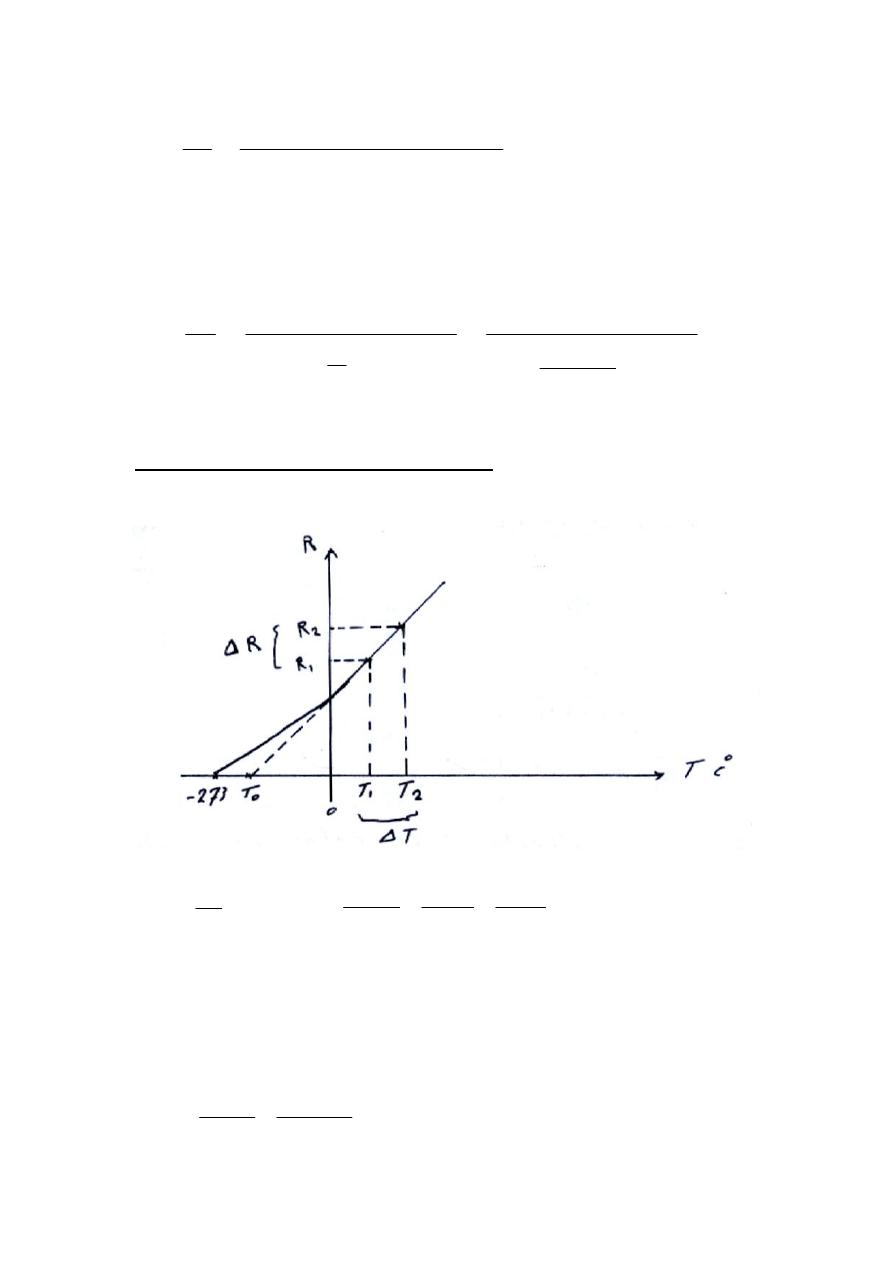
Dr. Sameir Abd Alkhalik Aziez
University of Technology (Lecture (1))
-
٧
-
9
10
6
10
3
10
10
8
.
1
6
3
2
6
A
R
Example: What is the resistance of 100 m length of copper wire with a
diameter of (1 mm) and resistivity 0
.0159 μΩm .
Solution:
02
.
2
2
10
1
100
10
0159
.
0
2
100
10
0159
.
0
2
3
6
2
6
d
A
R
Effect of Temperature on a resistance :-
slop =
T
R
= constant =
1
1
2
2
1
2
1
2
T
T
R
R
T
T
R
R
T
T
R
R
Example:
The resistance of material is 300 Ω at 10C
o
, and 400 Ω at 60C
o
. Find
its resistance at 50 C
o
?
Solution:
slop
o
C
T
T
R
R
/
2
10
60
300
400
1
2
1
2
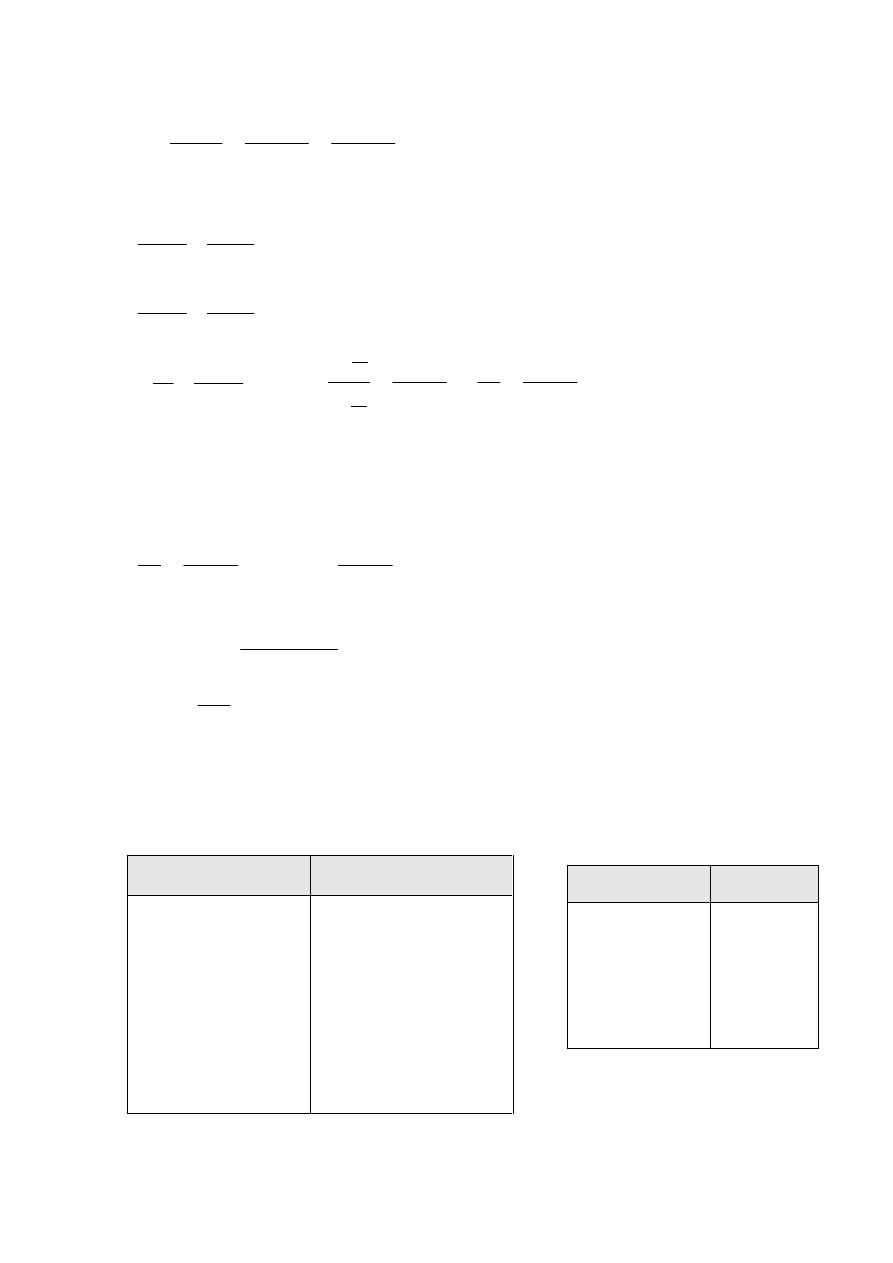
Dr. Sameir Abd Alkhalik Aziez
University of Technology (Lecture (1))
-
٨
-
380
300
80
80
300
40
300
10
50
300
2
1
1
R
R
R
R
R
T
T
R
R
Also from the above figure we can sea
0
1
1
0
2
2
0
1
1
0
2
2
0
0
T
T
R
T
T
R
T
T
R
T
T
R
0
1
0
2
1
2
T
T
T
T
R
R
, hence
0
1
0
2
1
2
0
1
0
2
1
2
T
T
T
T
T
T
T
T
A
A
Example:
Aluminum conductor has resistance 0.25 Ω at 10 C
o
. Find its
resistance at 65 C
o
?
Solution:
.
31
.
0
246
301
25
.
0
236
10
236
65
25
.
0
2
0
1
0
2
1
2
0
1
0
2
1
2
R
T
T
T
T
R
R
T
T
T
T
R
R
The following table illustrate the value of resistivity (
) for different materials
at 20 C
o
temperature.
Material
T
o
, C
o
Silver
Copper
Aluminum
Iron
-234
-234.5
-236
-180
Material
at 20 C
o
, Ω.m
Silver
*Copper
Aluminum
Iron
Paper
Mica
1.63*10
-8
(1.72 - 1.77)*10
-8
2.83*10
-8
20*10
-8
10*10
10
10
11
-10
15
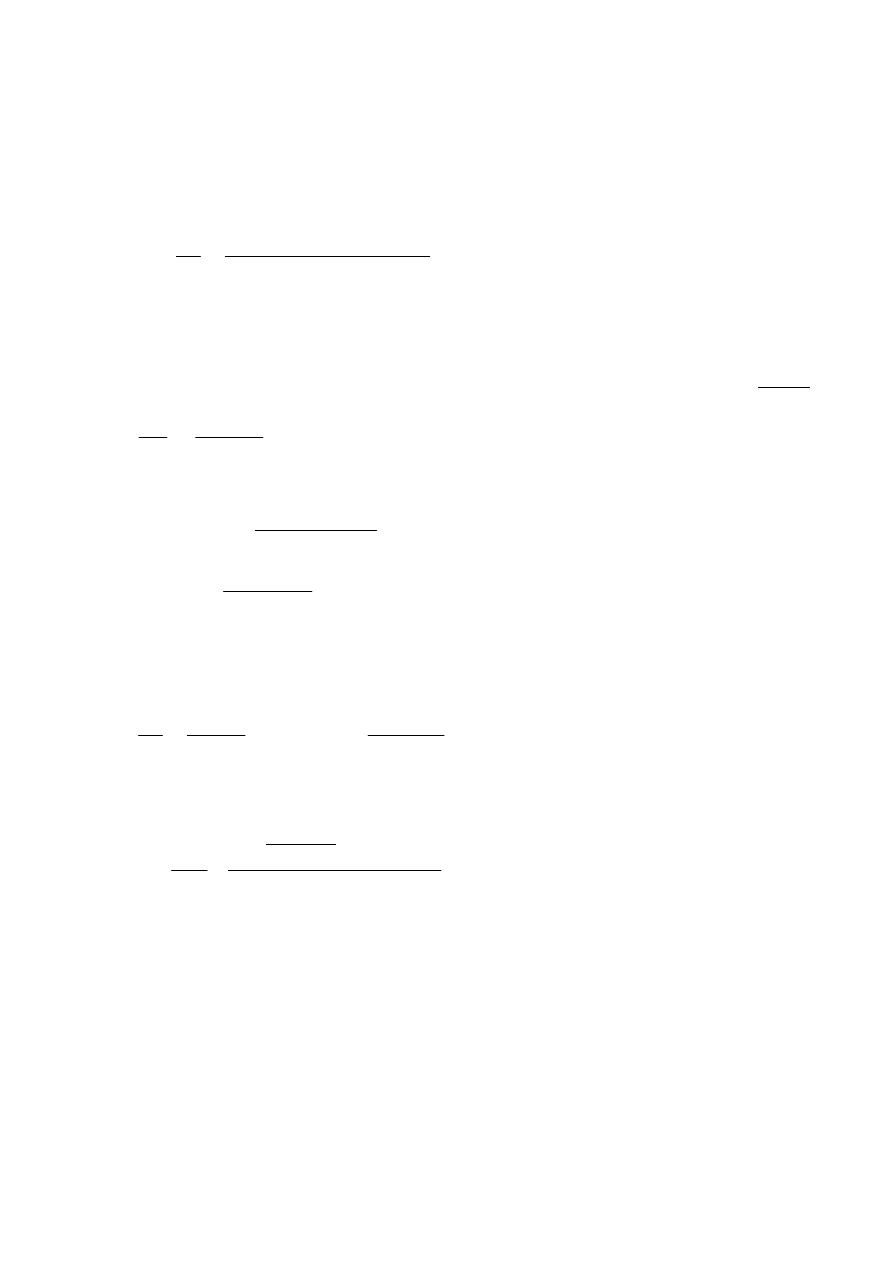
Dr. Sameir Abd Alkhalik Aziez
University of Technology (Lecture (1))
-
٩
-
Example: Aluminum conductor with length of 75 cm and 1.5 mm
2
cross
section area. Find its resistance at 90 C
o
?
Solution:
m
A
R
15
.
14
10
5
.
141
10
50
83
.
2
10
5
.
1
10
75
10
83
.
2
4
4
6
2
8
ﻣﻼﺣظﺔ
:
اذا ﻛﺎﻧت اﻟﻣﻘﺎوﻣﺔ ﻣطﻠوﺑﺔ ﻓﻲ درﺟﺔ ﺣرارة
20C
o
ﻓﺎن اﻟﺣل ﯾﻧﺗﻬﻲ اﻟﻰ ﻫﻧﺎ
.
.
18
236
20
236
90
15
.
14
236
20
236
90
15
.
14
2
0
1
0
2
1
2
m
R
T
T
T
T
R
R
Another method
236
20
236
90
20
90
0
1
0
2
1
2
T
T
T
T
m
A
R
15
.
14
10
83
.
2
10
5
.
1
10
75
236
20
236
90
90
8
20
6
2
20
90
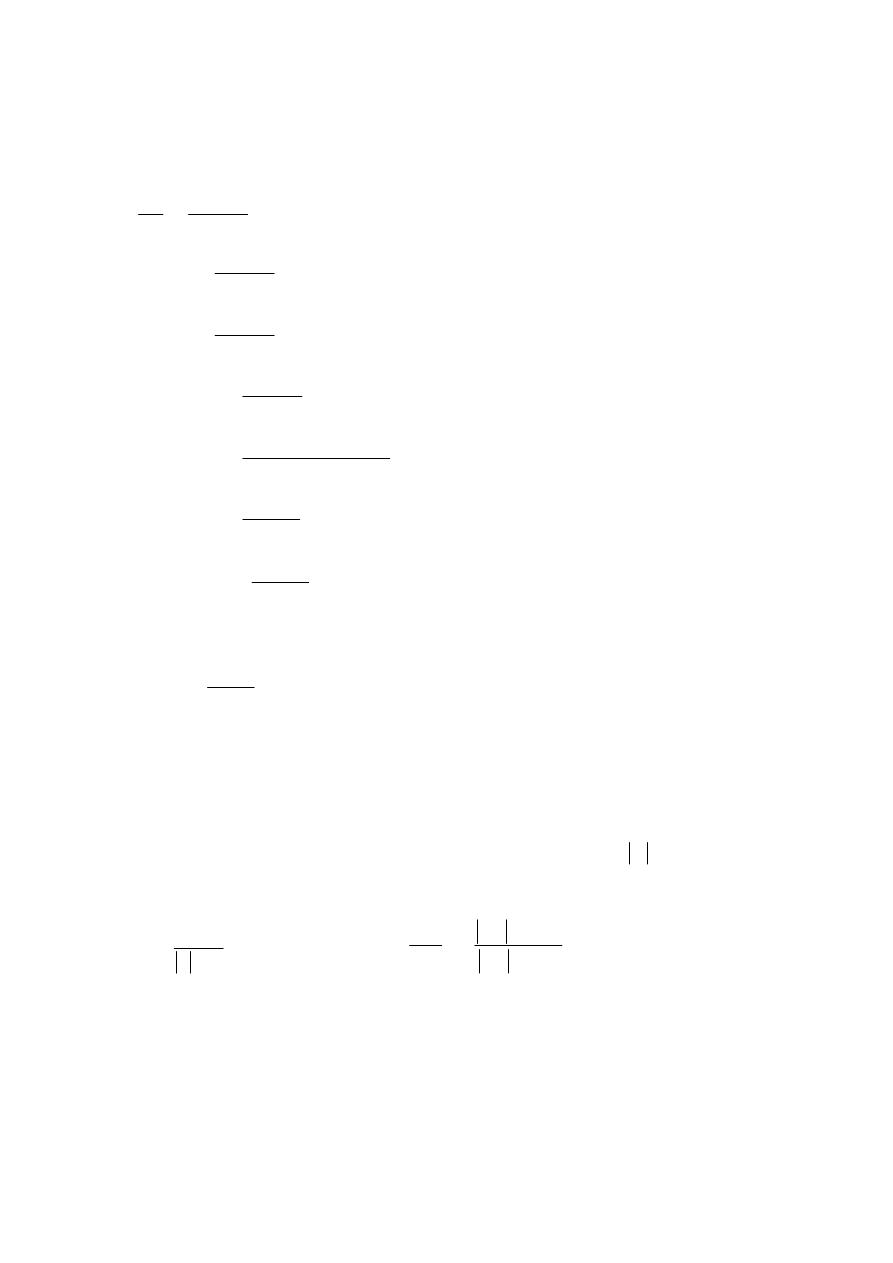
Dr. Sameir Abd Alkhalik Aziez
University of Technology (Lecture (1))
-
٠١
-
Driving :
1
2
0
1
1
2
0
1
1
2
1
2
0
1
0
1
0
2
1
2
0
1
0
2
1
2
0
1
0
2
1
2
0
1
0
2
1
2
0
1
0
2
1
2
1
1
1
1
1
1
1
1
T
T
T
T
R
R
T
T
T
T
R
R
T
T
T
T
T
T
R
R
T
T
T
T
R
R
T
T
T
T
R
R
T
T
T
T
R
R
T
T
T
T
R
R
Let
0
1
1
1
T
T
temperature coefficient of resistance at a temperature T
1
1
2
1
1
2
1
T
T
R
R
Where T
0
for copper = -234.5
In some resource, T
0
take an absolute value, which means
0
T
= 234.5, hence
we can sea
1
1
1
T
T
&
1
0
2
0
1
2
T
T
T
T
R
R
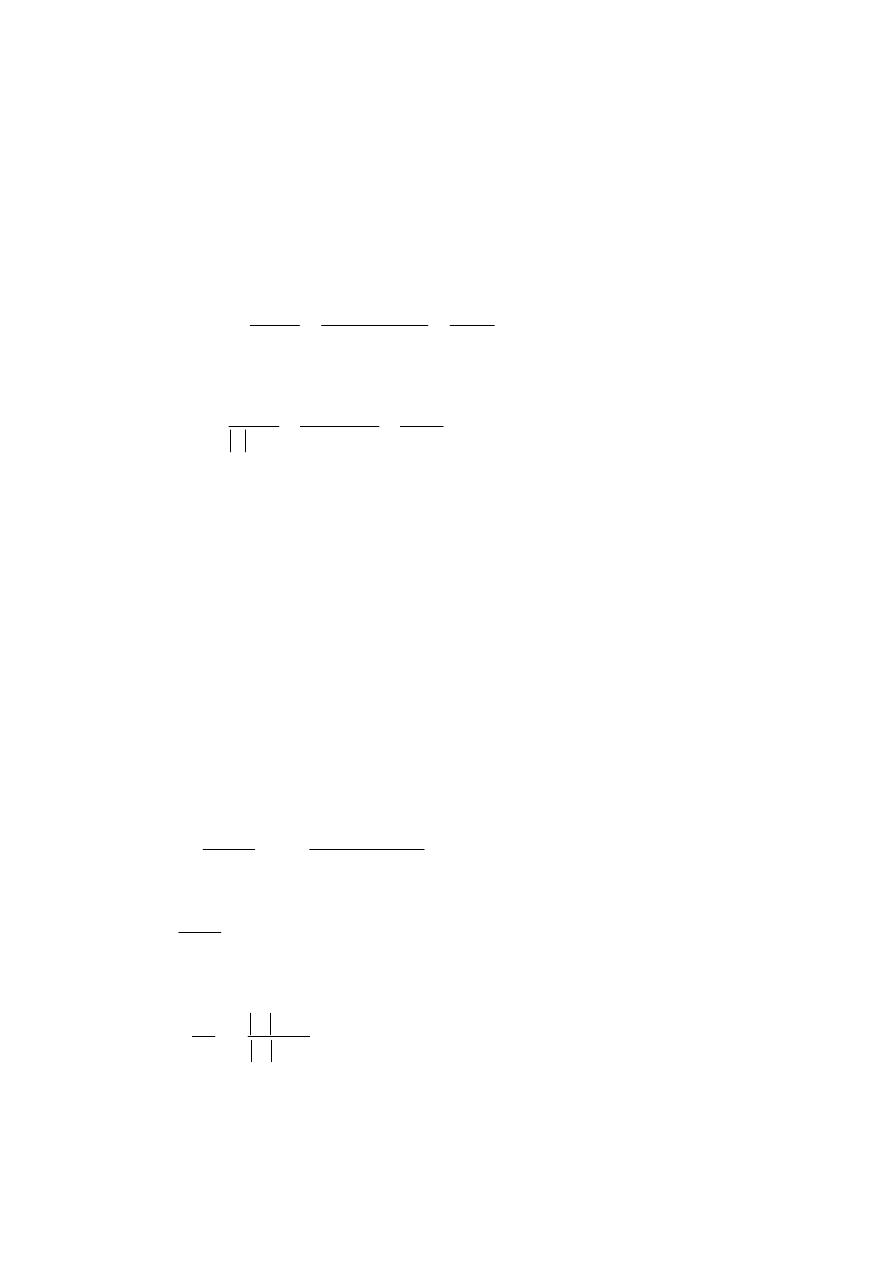
Dr. Sameir Abd Alkhalik Aziez
University of Technology (Lecture (1))
-
١١
-
Example:
a) Find the value of
1
at (T
1
= 40 C
o
) for copper wire.
b) Using the result of (a), find the resistance of a copper wire at 75 C
o
if its
resistance is 30 Ω at 40 C
o
?
Solution:
a)
00364
.
0
5
.
274
1
5
.
234
40
1
1
0
1
1
T
T
1/K
Or
00364
.
0
5
.
274
1
40
5
.
234
1
1
1
1
T
T
1/K
b)
1
2
1
1
2
1
T
T
R
R
8
.
33
40
75
00364
.
0
1
30
ﻻﺣظ
إن
اﻟﻣﻘﺎوﻣﺔ ازدادت ﻋﻧدﻣﺎ زادت درﺟﺔ
اﻟﺣرارة
.
Example: If the resistance of a copper wire at freezing ( 0 C
o
) is 30 Ω , Find its
resistance at -40 C
o
?
Solution:
88
.
24
5
.
234
5
.
194
30
5
.
234
0
5
.
234
40
30
0
1
0
2
1
2
T
T
T
T
R
R
Or
1
0
2
0
1
2
T
T
T
T
R
R

Dr. Sameir Abd Alkhalik Aziez
University of Technology (Lecture (1))
-
٢١
-
88
.
24
5
.
234
5
.
194
30
0
5
.
234
40
5
.
234
30
